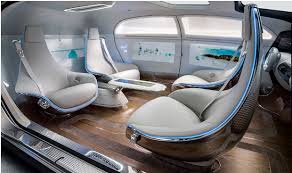Aims and Objectives
The aim of this report is to provide an analysis of potential benefits of driverless cars. To make it clear as an example we can take the example of driverlesstaxi services to replace private car commuter trips in metropolitan areas due to the increasing need in the modern world of today.It develops a legal and regulatory framework for dynamic allocation of driverless cars to the world of technology which is not a barrier to the testing of this creative vehicles on public roads in near future.
This review concludes that expanding such kinds of driverless cars will be of good help when it comes to the passenger trips, empty-vehicle routing and multi-criteria evaluation with regard to passenger waiting time, trip time and fleet size. Using a demonstration of running personal trip request for metropolitan areas and an exact traffic network demonstration, varying frameworks (different levels of passenger waiting time at origin and the excess in travel time) are compared with regard to passenger travel time, number of cars needed and vehicle mileage. For the nextstep the environmental influences of the varying framework are evaluated and measured by the use of life cycle approach.
This makes a big opportunity for the whole world to assign in forming a good future of these breathtaking developments and the Governments, working with the abdicated executions, must be ready to play its part in making this dream comes true.It’s considered that the developed industrial countries own the most welcoming regulatory environments for development of this technology.
This paper is about to exposes the Government’s program to simplify the production of vehicles and examining in which the driver is able to pick their travel time in ways that have never previously been possible. Having considered that a driver spends, in average, a long time equals six working weeks driving a year, this technology stands as a real opportunity. Moreover, automated cars which never get worn or knock down can be as a key to fundamentally improve road safety. This document sets out the best possible structures to back up the testing of automated vehicles to persuade the largest global businesses.
As the other objective of this paper it can be pointed out that they contribute so positively to the development of this technology. The knowledge and experience having been brought here can make huge benefit and will help to take the technology from the test track to the urban laboratory. Being supported by the right investment it can find the right way to industrial and regulatory conditions for building the automotive technologies of the future.
The researches claim that an automated transport system potentially brings about an on-demand door-to-door transport with a service of high level, by the use of less than one tenth of today’s personal cars and parking lots. In order to make an environmental profit and lower level of congestion an automated transport system requests the users to agree on ride-sharing, allowing a maximum 30% increase of their travel time (15% on average) and a start time window of 10 minutes.
In a plot where drivers are not willing to accept any decrease in the level of services, that’s to say, no ride-sharing and no delay, empty vehicle drive of automated transport system would end in exceeded road traffic which will influence on the environment and congestion. Visualizing the future of driverless electrical cars an automated system and electrical vehicle technology seems to be a “perfect” match which indeed would share a fundamentally helpful transport system in the world.



